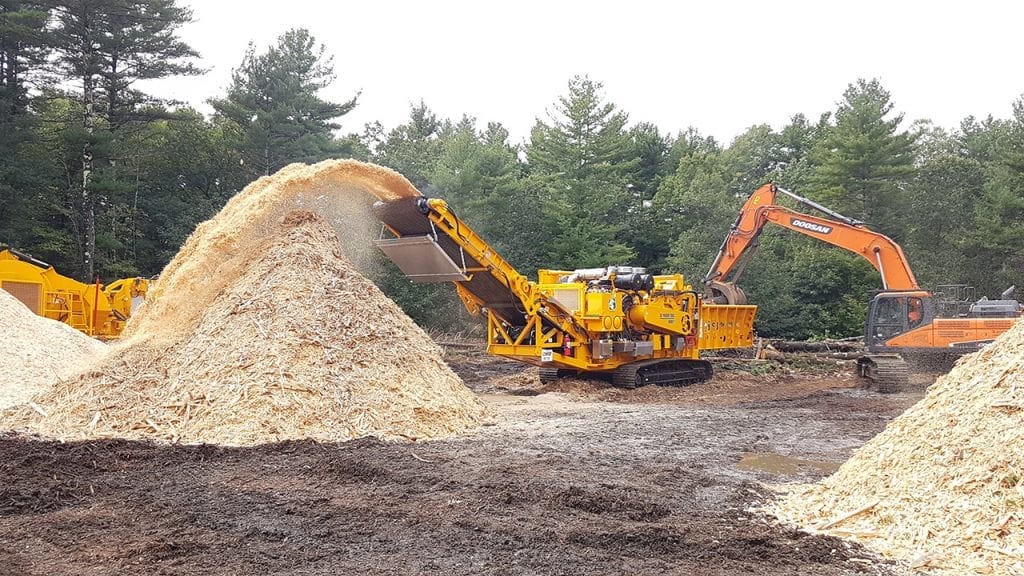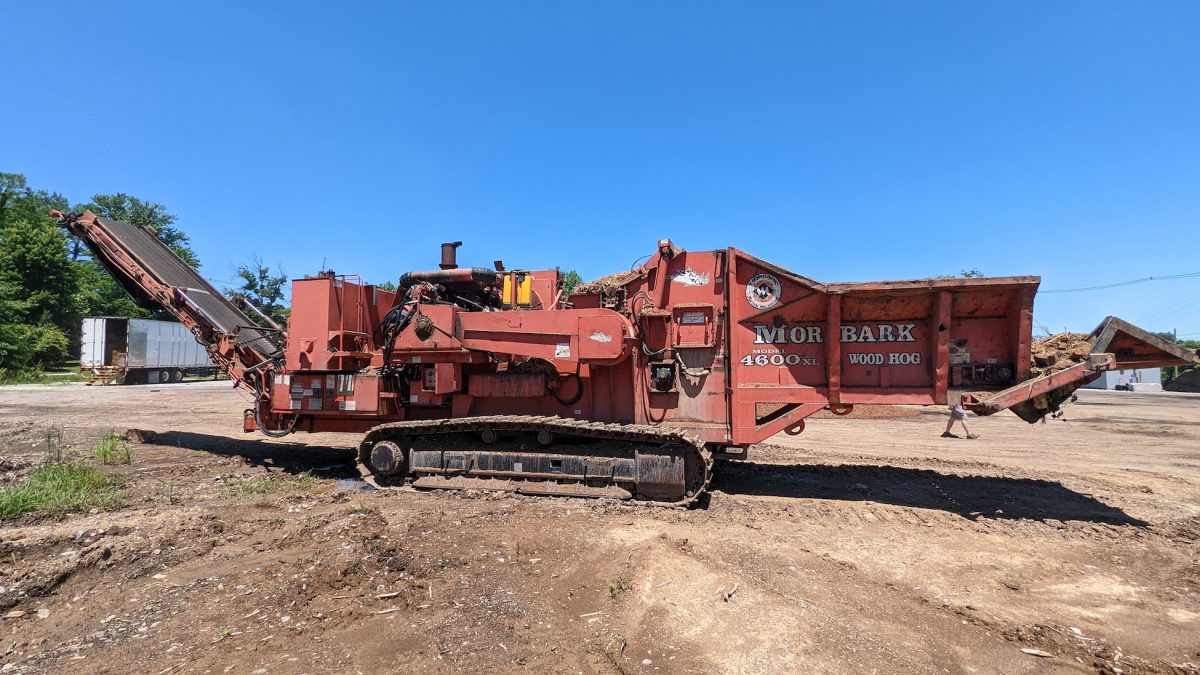Invest Carefully: Unlocking the Best Deals on a Horizontal Grinder for Sale
Achieve Superior Performance With a Straight Mill in Recycling Applications
With the growing demand for sustainable and reliable waste monitoring remedies, it is crucial to discover sophisticated modern technologies that can satisfy these difficulties head-on. Go into the horizontal mill - a effective and flexible device that has revolutionized the reusing sector. Join us as we unwind the answers to these questions and dive right into the world of straight mills, where development meets quality.
Advantages of Using a Straight Mill

One more considerable benefit of utilizing a straight grinder is its capability to create a consistent and uniform final result. The grinder's design ensures that materials are ground down to a specific size, making it easier to separate and sort for further processing. This uniformity is crucial in achieving top notch recycled products that can be utilized in different sectors.

Along with performance and productivity, straight mills additionally provide ecological advantages. By minimizing the quantity of waste and converting it into functional products, these machines contribute to lose decrease and source preservation. This not only helps shield the environment however likewise advertises lasting techniques in recycling.
Key Functions of a Straight Mill
Among the distinct features of a straight mill is its collection of essential functions that add to its efficiency in reusing applications. These functions are especially made to boost performance, efficiency, and safety in the recycling procedure.
Firstly, horizontal mills are furnished with a powerful engine that provides significant horse power to tackle challenging products. Additionally, straight mills are created with a big feed opening and a wide conveyor belt, permitting for simple loading of bulky products.
One more key function of horizontal mills is their ability to generate a consistent and constant end product. These mills are equipped with several screens or grate systems that permit for customizable sizing of the result material. This makes certain that the end product fulfills the specific demands of the recycling application, whether it is biomass gas manufacturing or composting.
Additionally, straight grinders are created with safety in mind. They are furnished with various security features, such as emergency situation quit buttons, safety and security guards, and automatic shut-off systems. These functions aid to stop mishaps and protect operators from prospective hazards.
Kinds of Products Ideal for Processing With a Straight Mill
A wide array of products can be successfully processed with a straight mill, making it a flexible device in the recycling market. One of the primary materials ideal for refining with a horizontal mill is timber waste.
Along with wood waste, a straight grinder can also refine other natural materials, such as yard waste and environment-friendly waste. This consists of turf clippings, leaves, and hedge trimmings - horizontal grinder for sale. By grinding these materials, the mill can assist decrease their quantity and assist in simpler composting or recycling
Additionally, a horizontal mill can processing specific sorts of building and construction and demolition debris. This consists of concrete, asphalt, and bricks. By grinding these products, the grinder can generate recycled aggregates that can be utilized in new construction jobs, decreasing the demand for virgin materials and advertising sustainability.
Tips for Optimizing Efficiency With a Straight Grinder
To enhance the performance of a horizontal mill, it is important to implement efficient strategies that make best use of effectiveness. Below are some tips to assist you attain exceptional performance with your straight grinder in recycling applications.
First of all, it is crucial to appropriately keep and service your equipment. On a regular basis inspecting and cleaning up the maker, along with replacing damaged parts, will ensure its ideal efficiency. This consists of monitoring and adjusting the cutting teeth, anvils, and displays to make certain proper alignment and sharpness.
Secondly, it is crucial to pick the appropriate size and type of screen for the desired output. The screen identifies the dimension of the final product, so selecting the appropriate screen will minimize the amount of material re-circulating through the grinder, thus increasing efficiency.
In addition, effectively feeding the mill is vital to maximizing efficiency. It is recommended to keep a regular and continual feed rate, avoiding overloading or underloading the machine. This aids to avoid unnecessary wear and tear and ensures a consistent and reliable grinding process.
Lastly, making use of innovative innovations and features available in modern straight mills can significantly enhance performance. These might include attributes like automated feed systems, remote operation, and real-time monitoring of equipment performance.
Study: Success Stories With Horizontal Grinders in Recycling Applications
By applying the previously mentioned approaches, several success stories have emerged showcasing the effectiveness of horizontal why not try this out mills in reusing applications. After adopting a horizontal mill, they experienced a substantial improvement in efficiency.
One more success tale comes from a construction company in Texas. They were dealing with a high volume of demolition waste, consisting of concrete and asphalt. By integrating a straight mill into their recycling process, they were able to grind the waste material into recyclable materials such as accumulation for road building. This not only decreased landfill waste however also saved the business cash by eliminating the my response demand to purchase new products.
In a different scenario, a waste management company in New York carried out a horizontal mill to procedure combined waste from different resources. The mill was able to properly separate and grind different sorts of waste, enabling for easier sorting and recycling. This caused a significant reduction in landfill waste and a boost in recycling rates.
These success tales highlight the adaptability and efficiency of horizontal grinders in reusing applications. They demonstrate just how these equipments can properly refine different sorts of waste, decrease land fill waste, and add to a much more environmentally friendly and lasting reusing process.
Conclusion
In verdict, making use of a straight grinder in recycling applications offers various advantages such as improved effectiveness and efficiency. The essential attributes of a horizontal mill enable reliable processing of numerous materials, including timber, environment-friendly waste, and building debris.
One of the key products ideal for refining with a horizontal mill is timber waste.In enhancement to wood waste, a straight grinder can also refine various other organic materials, such as lawn waste and eco-friendly waste. By incorporating a straight mill into their reusing process, they were able to grind the waste product right visit this web-site into multiple-use products such as accumulation for roadway construction.In a different situation, a waste administration firm in New York applied a horizontal grinder to procedure mixed waste from different sources. The key functions of a horizontal mill make it possible for efficient processing of different products, including timber, green waste, and building and construction debris.